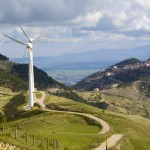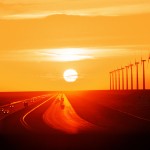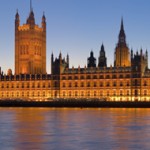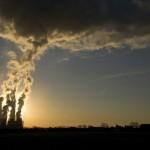 Wind and other renewable energies must be given immediate priority over fossil fuels and nuclear power if the EU is serious about its commitment to cut greenhouse gas emissions by 80-95% by 2050, says a new report by the World Wildlife Fund for Nature (WWF). Without such action the EU will only manage a 40% cut in emissions by 2050, warns the NGO.
Wind and other renewable energies must be given immediate priority over fossil fuels and nuclear power if the EU is serious about its commitment to cut greenhouse gas emissions by 80-95% by 2050, says a new report by the World Wildlife Fund for Nature (WWF). Without such action the EU will only manage a 40% cut in emissions by 2050, warns the NGO.
“The spiralling economic, social and environmental cost of our current energy system, and the looming threat of climate change disaster, flip the burden of proof: anything other than sustainable renewables used efficiently should now have to justify their existence, not the other way around as has historically been the case,” says Jason Anderson, head of climate and energy at WWF’s European Policy Office.
 Wind energy in South Australia now meets around 26% of the region’s electricity demand and has become one of the nation’s growth sectors, a new report says.
Wind energy in South Australia now meets around 26% of the region’s electricity demand and has become one of the nation’s growth sectors, a new report says.
The 22-page report — The Critical Decade: Generating a renewable Australia — also noted that wind power is one of the country’s most cost-competitive renewable electricity sources.
Published by the Climate Commission, the report said Australia has enormous potential for renewable energy but currently that potential is under-utilised. “In coming decades, the Australian economy could be powered almost entirely by renewable energy,” the report said, adding the nation has world-class wind and solar resources.
 Alarmist headlines in the UK today proclaimed the “tripling” of energy bills to pay for “green energy”. But the scaremongering belied a story that is positive for the British economy, the climate, the consumer and the European wind energy industry.
Alarmist headlines in the UK today proclaimed the “tripling” of energy bills to pay for “green energy”. But the scaremongering belied a story that is positive for the British economy, the climate, the consumer and the European wind energy industry.
The feature of the upcoming energy bill most media seized on was that energy firms will be allowed to triple the amount of money consumers pay for so-called “green” measures, including renewables but also nuclear power.
 As delegates and observers get ready for the annual UN conference on climate change which begins next Monday in Doha, they will have lots of reports to consider as they being working towards the goal of extending the existing Kyoto Protocol designed to reduce global greenhouse gas emissions.
As delegates and observers get ready for the annual UN conference on climate change which begins next Monday in Doha, they will have lots of reports to consider as they being working towards the goal of extending the existing Kyoto Protocol designed to reduce global greenhouse gas emissions.
According to one of those studies, The Emissions Gap Report, which was coordinated by the UN Environment Programme (UNEP) and the European Climate Foundation, shows that greenhouse gas emissions are now about 14% above where they need to be in 2020.
Released Wednesday, the report says that the concentration of warming gases like carbon dioxide (CO2) has increased 20% since 2000.
 In the second of this two-part interview, EWEA 2013 Annual Event Chair Francesco Starace, CEO of Enel Green Power, explores the recent developments in the wind power sector and looks at the sector’s prospects ahead…
In the second of this two-part interview, EWEA 2013 Annual Event Chair Francesco Starace, CEO of Enel Green Power, explores the recent developments in the wind power sector and looks at the sector’s prospects ahead…
EWEA’s last Annual Event in Copenhagen is already over six months ago, what key developments – positive and negative – have taken place since then?
During the current difficult period, the wind industry remains resilient. Turbines manufacturers adopt survival strategies by upgrading turbines while developers focus on building premium higher margin projects.
With respect to Europe, the tightening of national budgets due to austerity measures and the fears of the impact of a rising electricity bill in a weak economic environment have led many governments to operate further regulatory changes, sometimes not very fortunate, especially when involving retroactive changes on power plants already installed. Nevertheless, a very important milestone has been reached by the European wind industry: the EU-wide wind installed capacity has reached 100GW – notably, half of which installed just in the last six years – and new and interesting signals are coming from emerging markets in Eastern Europe, North, South America and North African countries.
 Wind and other renewable energies must be given immediate priority over fossil fuels and nuclear power if the EU is serious about its commitment to cut greenhouse gas emissions by 80-95% by 2050, says a new report by the World Wildlife Fund for Nature (WWF). Without such action the EU will only manage a 40% cut in emissions by 2050, warns the NGO.
Wind and other renewable energies must be given immediate priority over fossil fuels and nuclear power if the EU is serious about its commitment to cut greenhouse gas emissions by 80-95% by 2050, says a new report by the World Wildlife Fund for Nature (WWF). Without such action the EU will only manage a 40% cut in emissions by 2050, warns the NGO.






 Comments
Comments



